
I've been really dismayed by the focus that EA has placed on its Ultimate Team feature in the past couple years of Madden releases. I've made my distaste known in my reviews of both 16 and 15. With the NCAA football series dead due to the revocation of the license, Madden is all we have. I feel like the best thing for me to do at this point is to just give up, since it seems that EA has no interest in appealing to the small demographic of simulation die-hards to which I belong. Instead, they want to keep their model of annual releases that force people to have to give up their established decks of Ultimate Team cards so that they can spend more money on micro-DLC to buy the credits necessary to rebuild their collection.
But as cynical as my reviews can be, I don't want to give up on football gaming. I love football, and I love gaming, and I want to continue to be able to enjoy the union of the two. And right now, Madden is the only way that I can do that.
So I'm going to take some time to write up a wishlist of the kind of features that I want - no expect - a modern football game to include. Some of them are new features that football games have never attempted. Others are ones that previous games just never got right. And still others might be things that were present in earlier games, worked just fine, but have been inexplicably removed to make room for less worthwhile features.
Table of Contents
[More]
4fd5b939-3284-4e4a-8b9f-96a72208a4b6|4|4.5
Tags:Madden NFL, Madden NFL 16, Madden NFL 17, Madden NFL 18, wishlist, EA, EA Sports, Tiburon, sports, football, NFL, simulation, franchise, preseason, game prep, scouting, practice, drills, film study, practice squad, scout team, rookie, weather, special teams, kicker, punter, onside kick, longsnapper, rugby punt, Dave Toub, skills trainer, ESPN NFL 2K5, Ben Roethlisberger, Russell Wilson, Cam Newton, Colin Kaepernick, Tony Romo
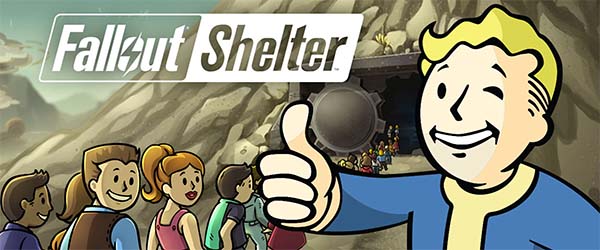
My recent forays into mobile and casual games has been pretty disappointing. I'm becoming pretty pessimistic about these games, and hoped that Bethesda's Fallout Shelter might have the production quality and complexity of design to keep my attention. After all, Bethesda doesn't seem to be using this game as a simple delivery service for micro-transactions and actually seemed to be taking it seriously as a video game.
Fallout Shelter does, indeed feel like a more honest attempt to make a true video game for mobile devices. Some of the telltale features of casual games are present, such as rewards for daily play and some micro-transactions. But the game isn't constantly badgering you to buy micro-transactions, and the player can't spend money to accelerate the basic production cycles of the game (as is the case in most other casual, resource-production games of this type). In fact, there are plenty of high-level items that can be unlocked fairly early via in-game rewards without having to spend any money at all.
Fallout from a different perspective
The player assumes the role of a vault overseer in the Fallout universe and must build your vault and manage the dwellers that live inside. Each dweller is assigned to a specific room in order to produce resources. There are three resources: power, water, and food, that are each produced in various rooms that you can build in the vault. Each resource has its own unique utility. Power allows rooms to keep functioning. Food keeps the dwellers from losing HP. Water keeps the dwellers from suffering radiation poisoning. And bottle caps are used as the primary currency for building rooms and buying or selling equipment. I don't get the sense that the different resources are just a way of forcing the player to grind more to pad out the length of the game, and the costs of new items stay fairly low and reasonable. There is still grinding, but it's nowhere near as painful or tedious as in Trexels, which has a very similar basic gameplay mechanic. Management is also more complicated than in Trexels, since each dweller has specific S.P.E.C.I.A.L. stats that affect how quickly the room will produce resources. So it matters which room a dweller is assigned to.
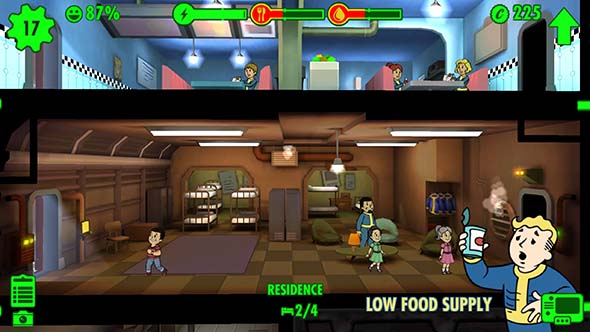
The different resources have different utility, which makes the game feel less like a grind.
Worked rooms will produce resources every so often, but they can also be rushed if you're desperate. Or if you want extra money, or if you want experience for your dwellers, or if you just want surplus resources, or if you're just bored. Rushing production seems to be highly encouraged by the game mechanics, since it is the fastest path to bottle caps, experience, and resources! The tradeoff is that you risk triggering an "incident" whenever you rush production. Incidents can include the room breaking out in fire, or radroaches or mole rats infesting the room. Both will do gradual damage to any dwellers in the room while the dwellers try to fight them off. Incidents are easy enough to deal with, especially if you have a hefty stockpile of stimpacks, and if all your dwellers are equipped with weapons. The risk of incidents will increase each time you attempt to rush, and so everytime I load up a vault, I usually collect all the resources already accumulated, then I repeatedly rush all the production rooms until the risk of incidents goes up to 60% or more. And once you get a medbay and laboratory, you can produce (and rush) stimpacks and rad-aways to heal your dwellers from incidents, which makes this cycle almost trivially easy to maintain.
Incidents can also occur randomly, and you'll even see the occasional random raider attack... [More]
c4477ea0-6ff6-42c3-bc43-e9d325496f82|1|4.0
Tags:Fallout, Fallout Shelter, Bethesda, vault, post-apocalypse, wasteland, raider, resources, dwellers, mobile, mobile gaming
UNLV football fans were riding high earlier last month after the team's record-breaking victory against Idaho State, and the nail-biting victory against rival Nevada the following week. UNLV was going into a pair of winnable games against Mountain West opponents San Jose State and Fresno State, and there was a very real possibility (and expectation) that UNLV could go 3-0 in Mountain West play and go into last week's Boise State game to determine first place in the conference. I don't think anybody expected that UNLV could have beaten Boise State, but Boise's debacle against Utah State certainly left doubts about that team's ability.
But it doesn't matter, UNLV managed to blow the games against San Jose and Fresno in the fourth quarter. A potential 4-3 start to the season fell to a pathetic 2-5, right in line with pre-season predictions from skeptics. UNLV has certainly shown that they have the ability to play well and win games, but in traditional UNLV fashion, they still can't muster up the discipline to pull through at the end of the game.
UNLV blew two fourth quarter leads to San Jose State and Fresno State to fall to 2-5 on the season.
The overtime loss to San Jose State was pretty heartbreaking. Watching UNLV completely fail to cover that last-minute screen pass for the game-tieing touchdown was a punch in the gut. A win would have given UNLV a respectable 3-3 record overall, but instead, they walked out 2-4. The team put up a good fight, especially considering the limitations of backup quarterback Kurt Palandech. The comeback effort was admirable, but UNLV just couldn't get it done in overtime. The following week's game was probably more disappointing. UNLV walked into the fourth quarter with an 11-point lead over Fresno State and looked to have the game well in hand. But the offense just couldn't execute in the fourth quarter, and the Bulldogs managed to put together a couple scoring drives to strip the victory from between UNLV's fingers.
A lot of the expectations for the team were squashed going into the game against Boise State, but I still held out some hope for a surprise upset. Starting quarterback Blake Decker was back from injury, and Boise looked vulnerable to mistakes. If UNLV's defense could contain Boise's offense, then UNLV might have a chance. Unfortunately, UNLV's defense just couldn't do enough. Boise cut through UNLV's defense like butter in the first quarter, putting together three scoring drives to open the game. In the meantime, UNLV's offense sputtered thanks to a proliferation of dropped passes.
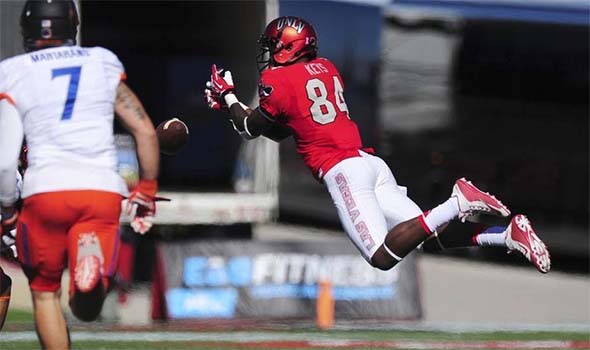
Dropped passes prevented UNLV from sustaining drives in the first quarter against Boise.
UNLV seemed to have given up on even trying to run the ball, as almost every play seemed to be a pass. It felt like UNLV went into halftime with three total rushing yards. Eventually, the defense made a big play, forcing a fumble that UNLV recovered in the end zone for UNLV's first touchdown... [More]
a4b77d8c-296a-43bd-bcd9-cb7994e6397b|0|.0
Tags:UNLV, University of Nevada Las Vegas, Rebels, Tony Sanchez, football, Sam Boyd Stadium, Black Decker, Kurt Palandech, Devante Boyd, Nevada, San Jose State, Fresno State, Boise State, Mountain West Conference
I frequently hear people bring up the infamous Fukuro video as a counter to my essay on why Silent Hill 2's Pyramid Head isn't a rapist. I haven't addressed this issue in the past because I actually don't know that much about the video or its creation. But I thought I would take a moment to address this issue. First off, let's watch the video in question (warning: contains disturbing content that may not be suitable for sensitive viewers).
This video was made by a small group of Team Silent members, most notably, Masahiro Ito and Akira Yamaoka, and it was included in a documentary DVD titled The Art of Silent Hill. There isn't really much information about this video on the internet other than speculation. As far as I know, Ito and Yamaoka have never made any public statements regarding its relevance to the canon of the games. When asked about the symbolism of the video on Twitter, Ito responded that it abstractly represented the womb.
Does an abstract representation of the womb have any relevance to Silent Hill 2? Not at all. It does, however, have strong ties to Silent Hill 3. In fact, the Fukuro girl character does make a brief appearance in Silent Hill 3! Perhaps Team Silent already had basic designs and outlines in place for Silent Hill 3 when they started work on Silent Hill 2, and the Fukuro video incorporated elements of both?
Fukuro's wiki page asserts that she was a scrapped monster from Silent Hill 2, however no citation is included for this claim, so I can't verify it. The wiki page goes on [without citation] to claim that Fukuro might have been another representation of James' subconscious (along with Pyramid Head). If that is true, then she may have been scrapped because the nurses and / or Maria may have made Fukuro's role superfluous and unnecessary.
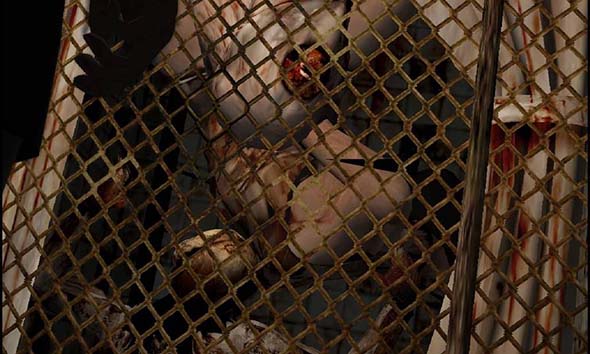
the Fukuro Lady appears briefly in an elevator scene in Silent Hill 3.
In any case, if Fukuro had been planned to be a monster symbolic of Jame's repressed sexual frustration, then it seems even less likely that Pyramid Head would also have represented the same element of Jame's subconscious! Pyramid Head and Fukuro's interactions in the Fukuro video could be symbolic of James' sexual desires being a source of guilt for which he wants punishment. In that case, guilt and sexual repression are still separate conditions represented by different manifested creatures that reinforce each other.
Fukuro's necessity in Silent Hill 2 was rendered moot by both Maria and the design of the nurses. It is possible that at some point during the game's design, Pyramid Head's role was intended to be different, and to be more representative of Jame's sexual urges. This could explain the creatures' visual design and the early cutscenes of him "raping" monsters. But as the game's development proceeded, Fukuro was dropped, Maria and nurses were added, and Pyramid Head's role became more explicitly representative of James' guilt and need for self-punishment as a result of Mary's death.
The bottom line is that the Fukuro video and Fukuro character are not in the actual game. At least not in Silent Hill 2. Masahiro Ito may very well believe that Pyramid Head is a sexually-symbolic monster, and he may very well have designed the creature with its Freudian aesthetic with that assumption in place. But for whatever reason, the scenario-writers decided not to pursue that avenue for the remainder of the game. Any lingering sexual symbolism for Pyramid Head is dropped within a couple hours of starting the game, and his role as a punisher is explicitly stated at the end of the game. At best, sexual aggression is a minor, implicit element of Pyramid Head's design; it is certainly not a defining characteristic of the creature, nor is it the creature's primary purpose.
A similar video was also made for Silent Hill 3, and features Robbie the Rabbit. This video also has no relevance to that game's plot.
[More]
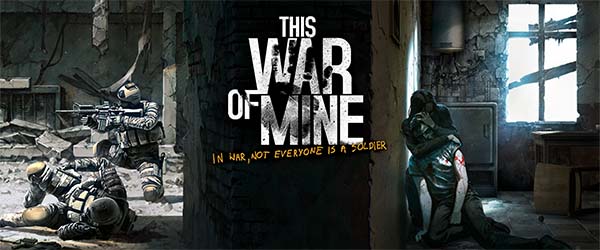
Games have an awkward relationship with war. Most games embrace violence and conflict because they are very easily simulated by computers and mapped to a set of easy-to-understand mechanics. Computers aren't as good at understanding or reacting to speech or emotion as they are at allowing a character to move around in a space and at tracing the path of a bullet or artillery shell. So when a game is about war, it's almost always told from the perspective of a soldier, someone actively participating in the war. And that character's participation is usually presented as noble and honorable, with the people that you are shooting being given little - if any - humanization at all. In many cases, the games will go out of their way to de-humanize the player's opponents by presenting them as literal demons, aliens, or the so-easy-to-hate Nazis.
While there are plenty of examples of games that deal with the behind-the-scenes causes and effects of a war, or the politics of conflict, these elements very rarely appear as central gameplay elements (outside of grand strategy games like Civilization, Total War, or Europa Universalis). Usually, the player plays on the battlefield, and any politics or effects beyond the battlefield are just material for non-playable cutscenes. At best, you might end up with a game that puts the player in the middle of the battle, but which has civilian characters that play a large role in the story.
One of my favorite games of the PS2-era is Ace Combat 4, which is a jet fighter combat game that found a comfortable middle-ground between flight sim and arcade shooter. Its narrative revolved around a child living in an occupied city, who befriends the ace fighter pilot of the occupying nation's air force. The player, however, takes on the role of a nameless, faceless ace fighter pilot belonging to the opposing liberation force. This created a fascinating dichotomy in which your success in missions resulted in defeats for the enemy ace who was the focus of the narrative. He falls into depression and alcoholism as the player systematically shoots down his wingmen and friends, and it served to humanize both sides of the conflict and exposed the human cost of war. One man's victory is the other's defeat. Your own victories became increasingly bittersweet as the game neared its final mission. It was a beautifully constructed scenario that has stuck with me to this day. I suspect that This War of Mine will leave a similar impact on me.
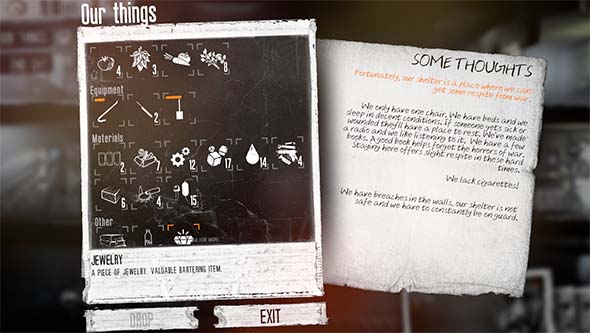
The logistics of keeping your shelves stocked with food and medicine is the primary challenge.
This War of Mine also reminds me of my visit to the Imperial War Museum in Manchester, U.K. this past January. I was really surprised by the difference in presentation that museum had as opposed to most museums that I visit in the United States. Whereas a museum in the U.S. will focus on exhibits of weapons, uniforms, vehicles, battle tactics, and politics behind wars, the IWM was focused primarily around the civilian costs of the two World Wars. It featured exhibits about food and material shortages, how women had to work as battlefield nurses and in factories, and how supplies were moved between cities under siege. It presented the wars as much more personal and ignoble and focused on how it affected people's day-to-day lives, and how the majority of people simply had to live through it. That's the same approach that the Polish studio behind This War of Mine took for their survival game.
Behind the lines
This War of Mine doesn't take place on the front lines or the battlefields. Instead of controlling a soldier, you play as a group of survivors in a rebellious city under siege. You have found a shelled building that you have claimed as a shelter, and every night, you must send one of your group out to scavenge one of various sites around the city for food, medicines, and other supplies to enable your group to [hopefully] survive till the end of the war. In the meantime, those who stay in the shelter must contend with the risk of being raided by other survivors during the night and having your hard-earned supplies stolen from under your own nose - or worse: somebody being hurt or killed.
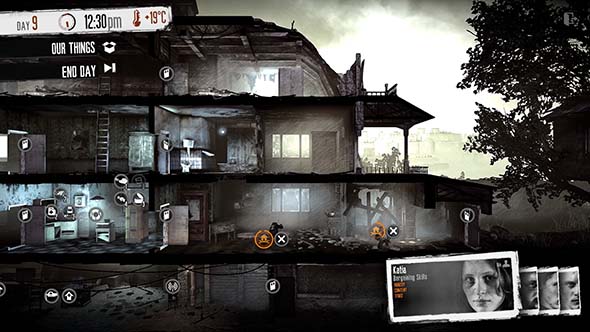
Your close-knit group of survivors must build and defend a shelter and scavenge for supplies.
The result is a game loaded to the brim with choices and consequences. How do your survivors spend their daytime hours? What items do you attempt to craft from your middling inventory of supplies? How do you defend yourself from raids? Do you send your one gun out with your scavenger in case he runs into hostile bandits, or keep it at home to defend your shelter from raids? Who do you send out each night to scavenge? Where do they go? And what do they bring back with them? The "rogue-like" fashion of the gameplay means that there's no undoing and no retries. This, combined with the scarcity of resources, makes every choice, every action, and every death is permanent. This gives a great deal of weight to all those choices that the game gives you.
... [More]
86d552ea-8fe5-4968-9a7d-1d98afbd4919|2|5.0
Tags:This War of Mine, PC, Steam, 11-bit studio, indie gaming, strategy, war, siege, refugee, civilian, survival, rogue
|

| 12 | | | | | | | 60 | | 11 | | | | | | | 55 | | 10 | | | | | | | 50 | | 09 | | | | | | | 45 | | 08 | | | | | | | 40 | | 07 | | | | | | | 35 | | 06 | | | | | | | 30 | | 05 | | | | | | | 25 | | 04 | | | | | | | 20 | | 03 | | | | | | | 15 | | 02 | | | | | | | 10 | | 01 | | | | | | | 05 |
|